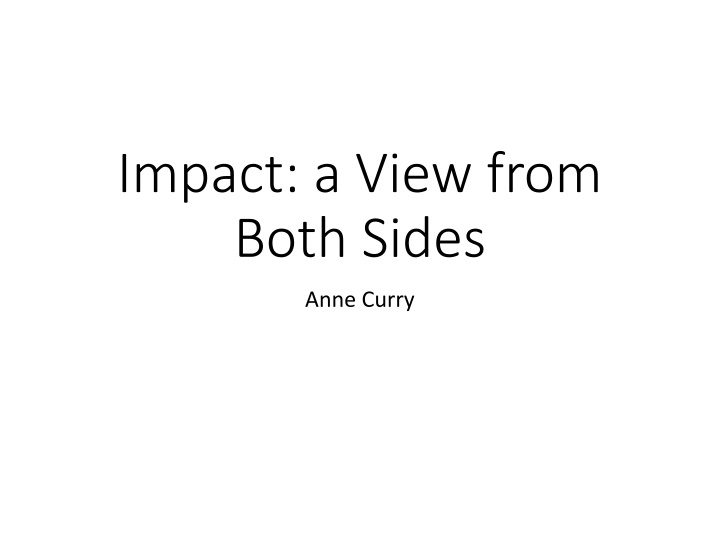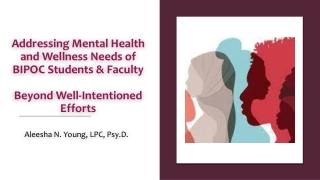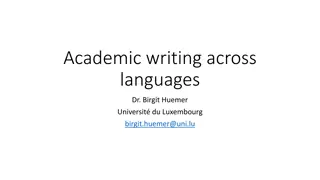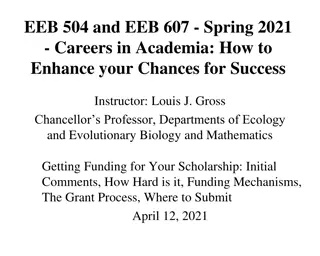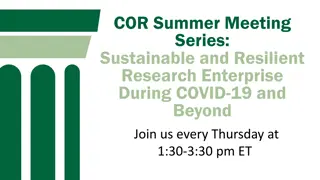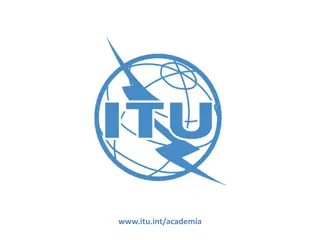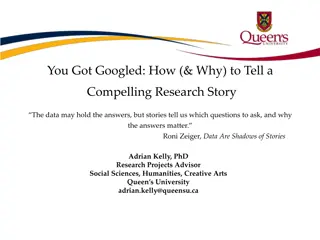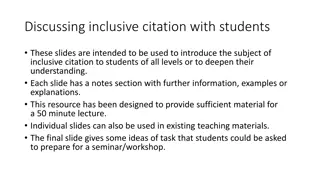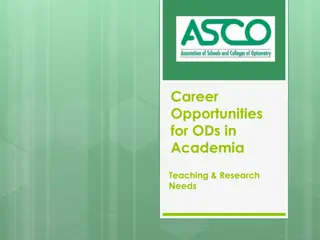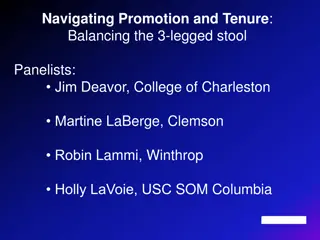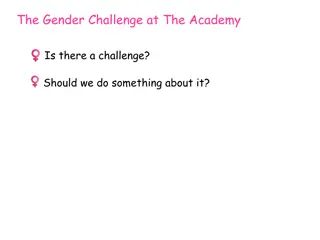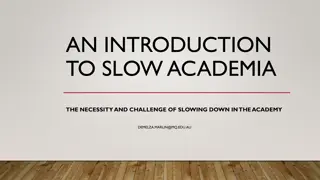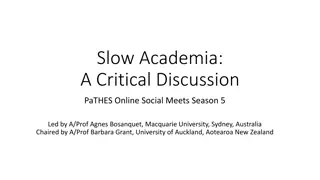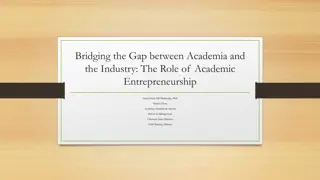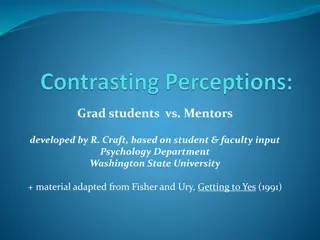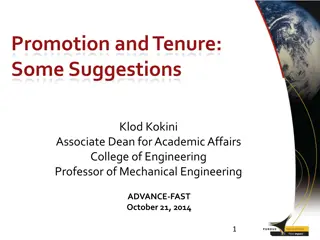Assessing Research Impact beyond Academia: Insights and Examples
The Research Excellence Framework (REF) evaluates the impact of research on various sectors. It rewards departments engaging with business and society, driving beneficial outcomes. Impact extends to economy, society, culture, and beyond, influencing policies and services. Examples include community regeneration, policy development, cultural collaborations, professional practice enhancements, and stimulating public engagement. Discover how research shapes attitudes, informs decisions, and drives societal change.
Uploaded on Feb 21, 2025 | 0 Views
Download Presentation

Please find below an Image/Link to download the presentation.
The content on the website is provided AS IS for your information and personal use only. It may not be sold, licensed, or shared on other websites without obtaining consent from the author.If you encounter any issues during the download, it is possible that the publisher has removed the file from their server.
You are allowed to download the files provided on this website for personal or commercial use, subject to the condition that they are used lawfully. All files are the property of their respective owners.
The content on the website is provided AS IS for your information and personal use only. It may not be sold, licensed, or shared on other websites without obtaining consent from the author.
E N D
Presentation Transcript
Impact: a View from Both Sides Anne Curry
2014: The REF will for the first time explicitly assess the impact of research beyond academia, as well as assessing the academic excellence of research. One purpose of the REF is to reward research departments that engage with business, the public sector and civil society organisations, and carry new ideas through to beneficial outcomes [within bigger agenda of accountability, both generally and linked to research grants from UKRI; see also 2021: Open access has the potential to make research more efficient and impactful ] 2014 and 2021: For the purposes of the REF, impact is defined as an effect on, change or benefit to the economy, society, culture, public policy or services, health, the environment or quality of life, beyond academia. [2021: Impacts on teaching within, as well as beyond, the submitting institution will be eligible for submission. Some loosening up on public engagement/dissemination? see 2019/02 annex A. Environment: assessment including the approach to enabling impact from its research ]
2019/02: panel criteria and working methods REF 2021. Annex A: Examples of impacts and indicators Impact on social welfare Research has contributed to community regeneration or development. Impacts on public policy, law and services Policymakers make use of research-based critical evidence synthesis in developing policy. Impacts on creativity, culture and society Collaboration with museum professionals results in enhancements to (cultural) heritage preservation and interpretation, including museum and gallery exhibitions. Co-production of new cultural artefacts, including for example, films, novels and TV programmes. Developing stimuli to cultural tourism and contributing to the quality of the tourist experience. Impacts on practitioners and delivery of professional services, enhanced performance or ethical practice Contribution to continuing personal and professional development. Educational or pedagogical practices and methods have changed in primary, secondary, further or higher education, within or beyond the submitting unit. Practices have changed, or new or improved processes or methods have been adopted, by individuals, companies or other organisations, through the provision of training or consultancy. Impacts on understanding, learning and participation Enhanced cultural understanding of issues and phenomena; shaping or informing public attitudes and values. Public interest and engagement in research has been stimulated .. The awareness, attitudes or understanding of (sections of) the public have been informed, and their ability to make informed decisions on issues improved, by engaging them with research. Public or political debate has been shaped or informed by research; this may include activity that has challenged established norms, modes of thought or practices. Contributing to processes of commemoration, memorialisation and reconciliation.
Panel D 2014: types of impact Civil society: informing and influencing the form and content of association between people/groups to illuminate and challenge cultural values and social assumptions Cultural life: creating and interpreting cultural capital to enrich and expand the lives, imaginations and sensibilities of individuals and groups Economic prosperity: applying and transferring the insights and knowledge gained from research to create wealth in the manufacturing, service, creative and cultural sectors Education: informing and influencing the form or the content of the education of any age group in any part of the world where they extend significantly beyond the submitting HEI Policy making: informing and influencing policy debate and practice through interventions relating to human or animal well being or the environment Public discourse: extending the range and improving the quality of evidence, argument, and expression to enhance public understanding of the major issues and challenges faced by individuals and society Public service: Contributing to the development and delivery of public services or legislation to support the welfare, education understanding or empowerment of diverse individuals and groups in society including the disadvantaged or marginalised
Medieval ICS in 2014 6,975 Impact case studies 263 in History, arising out of 83 institutions and 1786 staff of the 263, 28 were in medieval history 10.6% of all impact case studies none in Northern Ireland, four in Wales from 4 different institutions, 4 in Scotland from 3 different institutions (2 at St Andrews); 20 in England from 14 different institutions (2 each for York, Winchester, Oxford, KCL, 3 for UEA) places with a number of medieval impact case studies could do well (68% 4* at KCL,50 % at York, 58% at St Andrews, but 30% at UEA)
Types 2014 TV QMUL, Public understanding of the crusades through TV; St Andrews, Documenting the middle ages on TV Online projects: Fine Rolls (two institutions), Great Hospital in Norwich, records of the parliament of Scotland (2 institutions), overland trade other collections /dbase work ironwork; seals; sculpture; stained glass; Cabot anniversaries Magna Carta, Agincourt (lead up) exhibitions/museums Durham Lindisfarne gospels; Weald and Downland (2 institutions) local history York; inscribed stones and sculpture in Wales; material culture in wales links to present/ long term - diet at Leeds; Christianity at York two with archaeology (Oxford, Huddersfield)
Key points Link to the research needs to be obvious 2019/02: Underpinned by means that the research made a distinct and material contribution to the impact taking place, such that the impact would not have occurred or would have been significantly reduced without the contribution of that research Each case study must explain how (through what means) the research led to or contributed to the impact, and include appropriate sources of information external to the HEI to corroborate these claims Where the panel judges that the submitted unit s research did not make a distinct and material contribution to the impact, the case study will be graded as unclassified.
Debate on whether lots of different impacts as good as one big impact 2019/02: They acknowledge that impact may take many forms and occur in a wide range of spheres. They welcome case studies which describe impacts that have provided benefits to one or more areas of the economy, society, culture, public policy and services, health, production, environment, international development or quality of life.
My ICS 2014: Medieval Soldier and battle of Agincourt Talks, enquiries, and responses: citizen research stimulated Database use (measurement 124 countries); citizen research stimulated Education: Her work was included in a Pearson Key Stage 3 on-line learning unit: year 7s were asked to read this article in which Anne Curry suggests that the English were not heavily outnumbered. Now, in your own words, write a paragraph explaining Why the English victory at Agincourt is a myth . National War College Washington Economic benefit: tourism, museums. Bernard Cornwall book TV programmes (incl Sky Atlantic The British, 5k DVD sent to schools; Radio
